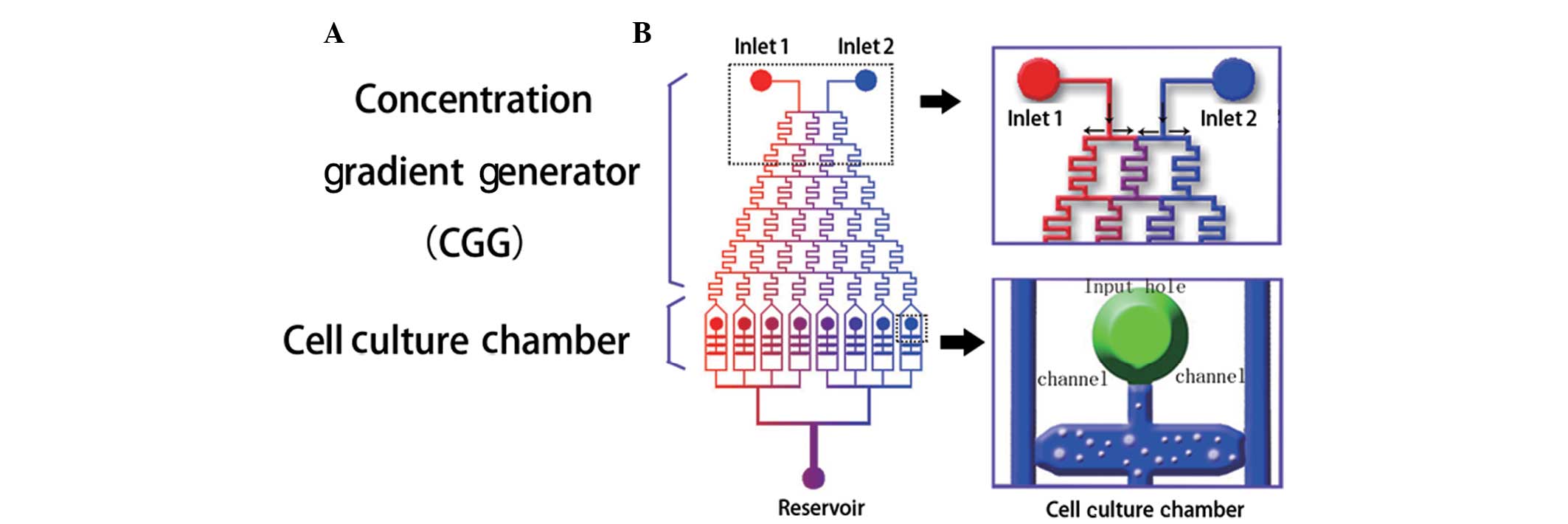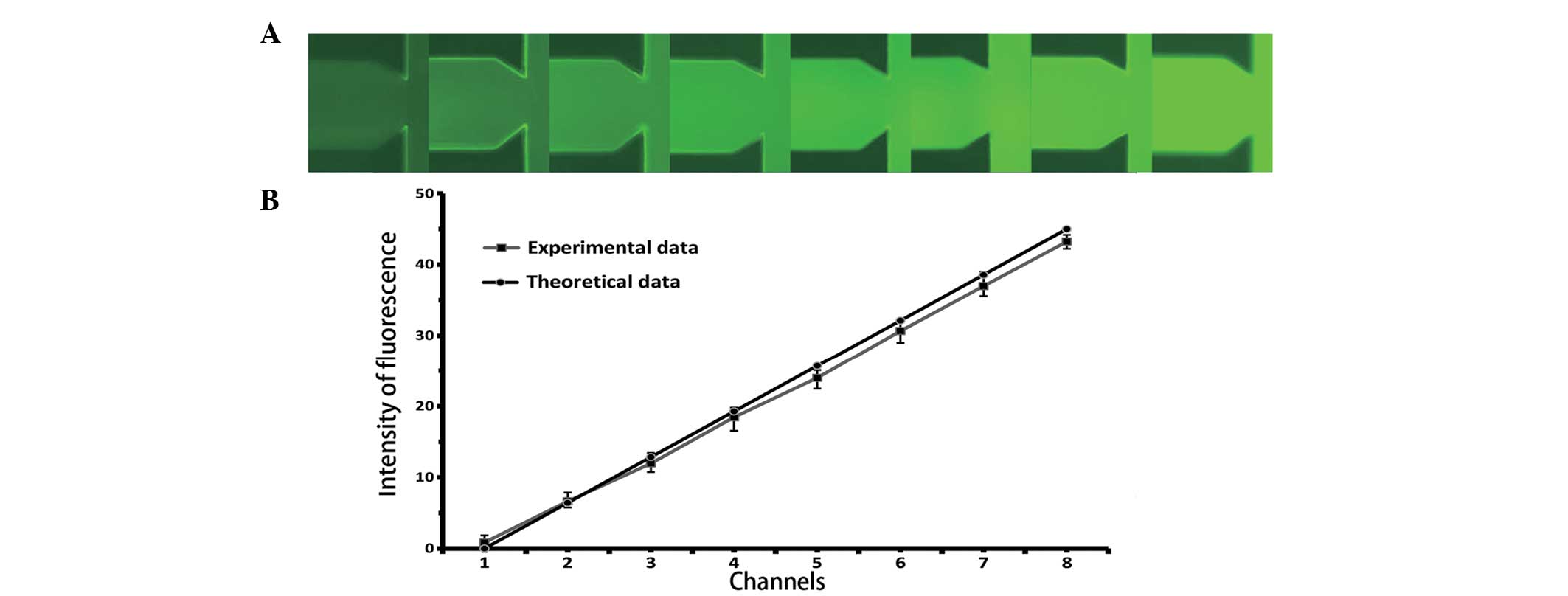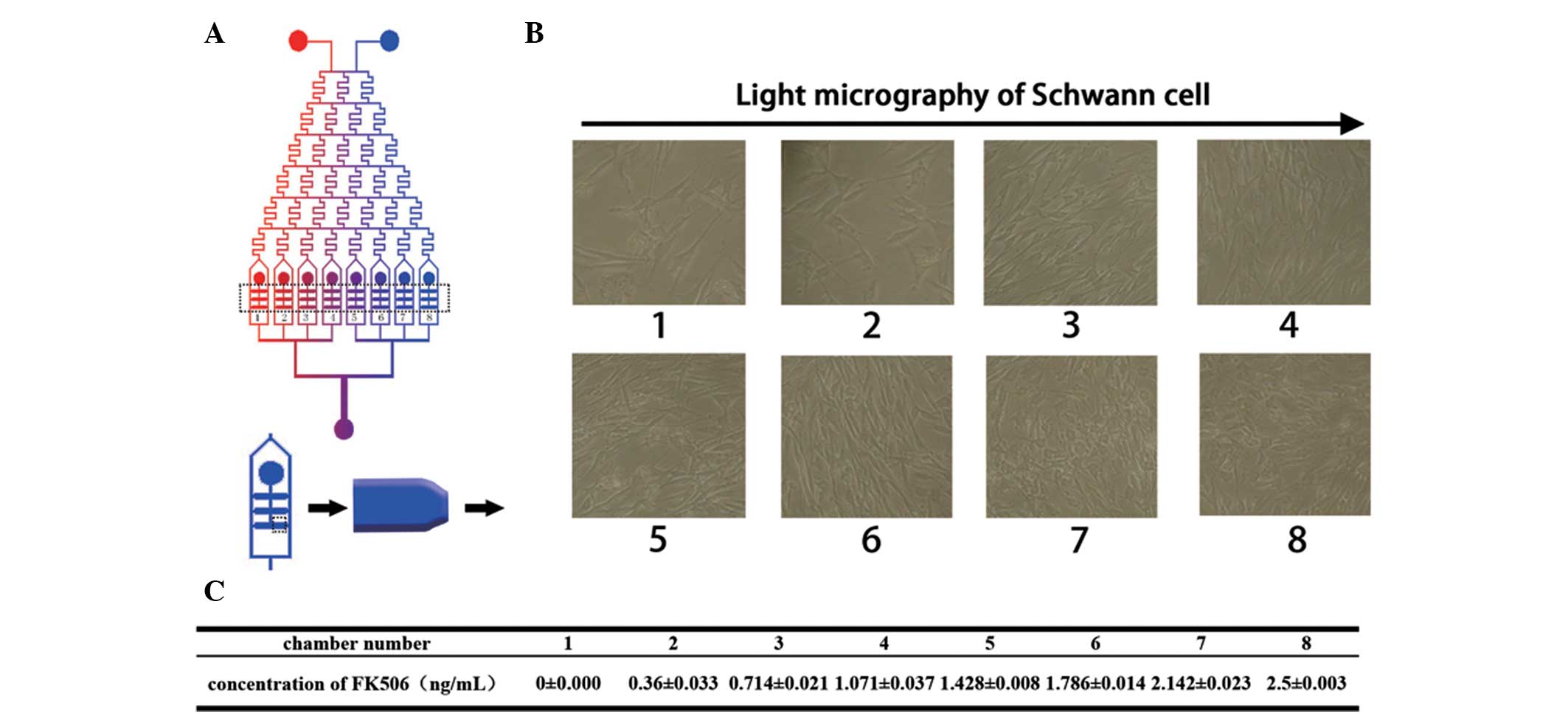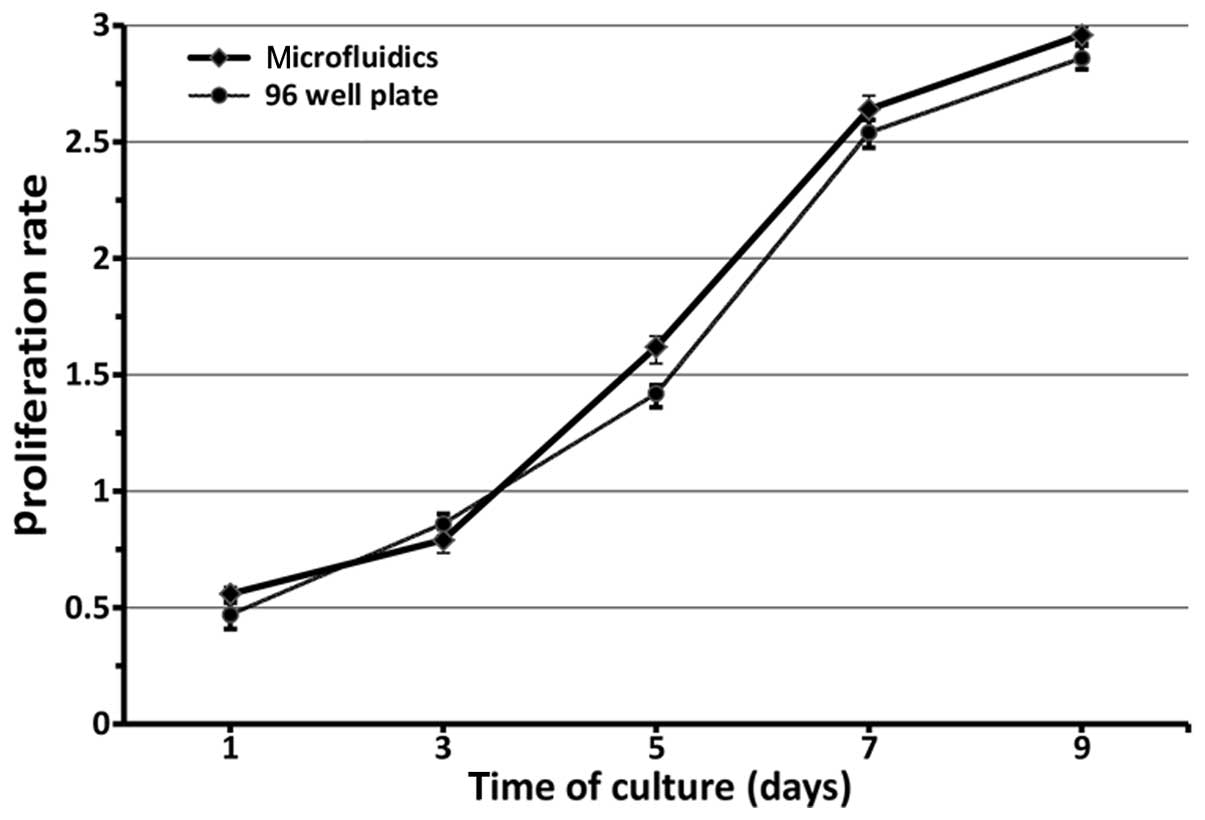An integrated microfluidic device for screening the effective concentration of locally applied tacrolimus for peripheral nerve regeneration
- Authors:
- Published online on: November 19, 2014 https://doi.org/10.3892/etm.2014.2082
- Pages: 154-158
Metrics:
Total
Views: 0 (Spandidos Publications: | PMC Statistics:
)
Total PDF Downloads: 0 (Spandidos Publications: | PMC Statistics:
)
Abstract
The effectiveness of tacrolimus (FK506) for the promotion of nerve regeneration is known. However, at present, due to the fact that systemic application may lead to opportunistic infections and tumors, and that the treatment of peripheral nerve injury with systemic immunosuppression is not generally accepted, FK506 has not been widely used for the treatment of simple or peripheral nerve injury. In this study, a pyramid‑shaped microfluidic device was designed and fabricated that was able to analyze the effective concentration of locally applied FK506. After testing the effectiveness of the microfluidic device by measuring the fluorescence intensity of fluorescein isothiocyanate-dextran, rat Schwann cells (SCs) were loaded into the device and cultured for 9 days in the presence of different concentrations of FK506. SC proliferation in the presence of FK506 was concentration‑dependent between 0 and 2.5±0.003 ng/ml. The proliferation rate reached a maximum at 1.786±0.014 ng/ml, which was statistically significantly different from the proliferation rate at lower FK506 concentrations. There was no statistically significant difference in the proliferation rate between the 1.786 ng/ml group and groups of higher FK506 concentrations. Furthermore, the SCs in the microfluidic device and a 96-well plate continued to proliferate as the culture time increased. No statistically significant differences were identified between the microfluidic device and a 96-well plate with regard to the proliferation rates in each corresponding group. The results obtained in this study demonstrated that the microfluidic device can be used as an excellent platform for the study of drug concentration at the cellular level, and the effective FK506 concentration for local application is 1.786±0.014 ng/ml.
















